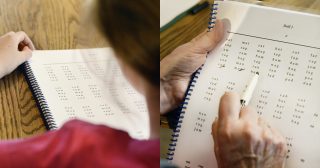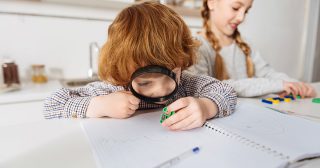5 Steps to Improve Reading Comprehension with Family Field Trips
August 15th, 2017Reading Comprehension for Dyslexia, ADHD, and LD
Reading comprehension is often difficult for those with dyslexia, ADHD, and learning disabilities. Poor reading comprehension can be due to problems with sounding out words. When reading is labored, comprehension typically suffers. However, reading comprehension problems are not always due to labored reading.
Comprehension problems occur when you don’t have a large factual knowledge base. This may be due to poor auditory or visual memory skills. Watch the video. Learn how factual knowledge impacts reading comprehension. Learn what you can do to improve your factual knowledge base.
Family Field Trips Improve Reading Comprehension for Dyslexia, ADHD, and Learning Disabilities
By having a framework or structure to your family fields trips, you can drastically improve memory skills. If you do not have a bit of a structure to your trips, your kids are not as likely to remember the great things you have done as a family together. With these family field trips, you can improve your vocabulary, memory and factual knowledge base.
5 Steps to Improve Reading Comprehension
Step One:
Visit a Local Zoo, Museum, Park, etc.
Pick one of the following places to visit. If there has been a different place (not in this list) that you’ve been meaning to visit, but haven’t had the chance, make the time to go with your family.
- Local Factory
- Local Bakery
- Nursery
- State Park
- State Capital
- Botanical Gardens
- Art Gallery
- Antique Shop
- Local Museum
- River or Lake
- Zoo
Step Two:
Learn About the History of Where You Visit
If it is a local park or river where there may not be guides or attendants, do a bit of research on the computer or at the local library before you go so that you will have materials to review while you are there about the history of the establishment.
Step Three:
Experience Through your Senses
Ask your kids about the sounds they hear, what scents they smell, about the objects they see, and the colors they see. Are they pleasant sounds and scents? If it is a bakery, do the smells trigger other sensations like making you hungry or making your mouth water? Here, we are addressing multiple areas of visual, auditory, and tactile-kinesthetic processing by actively thinking about exactly what we hear, see and do. This improves overall learning skills.
Step Four:
Take or Draw a Picture
Let’s make this field trip a long term memory. Take a picture of where you visited. Draw a picture of where you visited. Get a leaf, bark, or plaque of a place you visited. Place a sheet of paper over the plaque, leaf, or bark and rub a crayon on top of the paper. This will give you an impression, also known as a ‘rubbing’ of the item.
Step Five:
Add to the Family Album
Put the pictures and rubbings together with a quick summary of the place you went to one of the fill-in-the-blank graphic organizers from Ten Minutes to Better Study Skills. Your memory system improves dramatically more when you write with your hands versus when you type. If there are entries in your family album that are typed, be sure to hand write this summary first and then type them. When you have your summary together, 3-hole punch your list with the picture included and keep it in your family notebook. This family album will be there to help keep your memories together and solidify long-term memory as the years go on! You can always revisit it as additional reading material with your kids too.



































